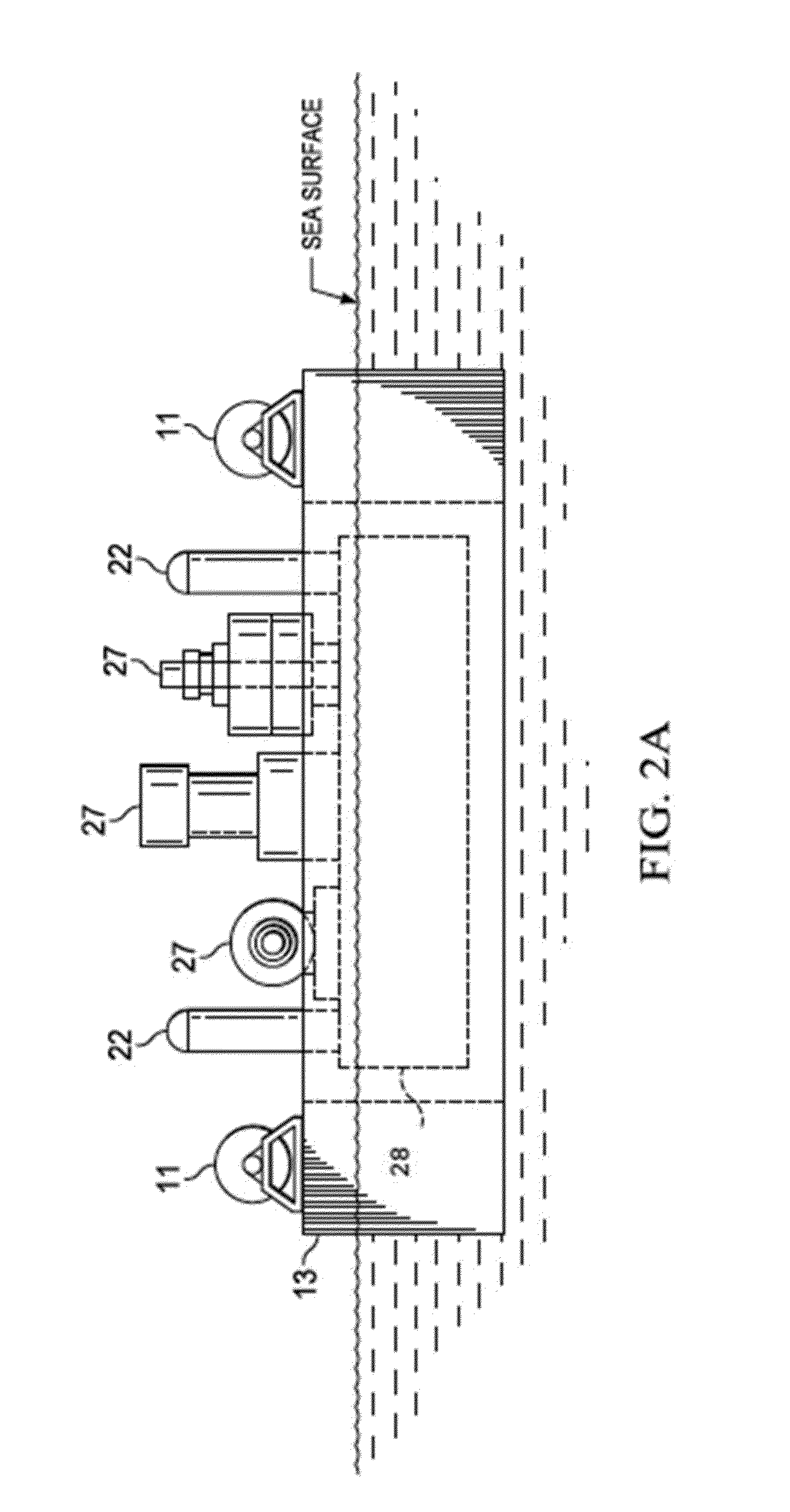Floatable subsea platform (FSP)
- Summary
- Abstract
- Description
- Claims
- Application Information
AI Technical Summary
Benefits of technology
Problems solved by technology
Method used
Image
Examples
Embodiment Construction
[0060]The invention provides a novel subsea facility wherein the entire facility is attached to one or more modules equipped with buoyancy tanks. The modules can be latched together quayside to form a floatable subsea platform (FSP), or can be connected to one or more subplatform bases, or combinations thereof based on size, weight and towing considerations.
[0061]With this design, the subsea equipment can be connected and tested in the air or shallow water before being towed to the deep water well location, wherein the entire platform or subparts thereof, can be lowered, via controlled buoyancy, to the sea floor where the FSP is attached to a pre-installed template or other anchorage devices. It is believed that by setting the system up quayside, any repairs and installation issues can be performed quickly and without the specialized equipment and personnel normally needed for deep water installations, thereby reducing installation cost and installation time.
[0062]Additionally, by h...
PUM
 Login to View More
Login to View More Abstract
Description
Claims
Application Information
 Login to View More
Login to View More - R&D
- Intellectual Property
- Life Sciences
- Materials
- Tech Scout
- Unparalleled Data Quality
- Higher Quality Content
- 60% Fewer Hallucinations
Browse by: Latest US Patents, China's latest patents, Technical Efficacy Thesaurus, Application Domain, Technology Topic, Popular Technical Reports.
© 2025 PatSnap. All rights reserved.Legal|Privacy policy|Modern Slavery Act Transparency Statement|Sitemap|About US| Contact US: help@patsnap.com



